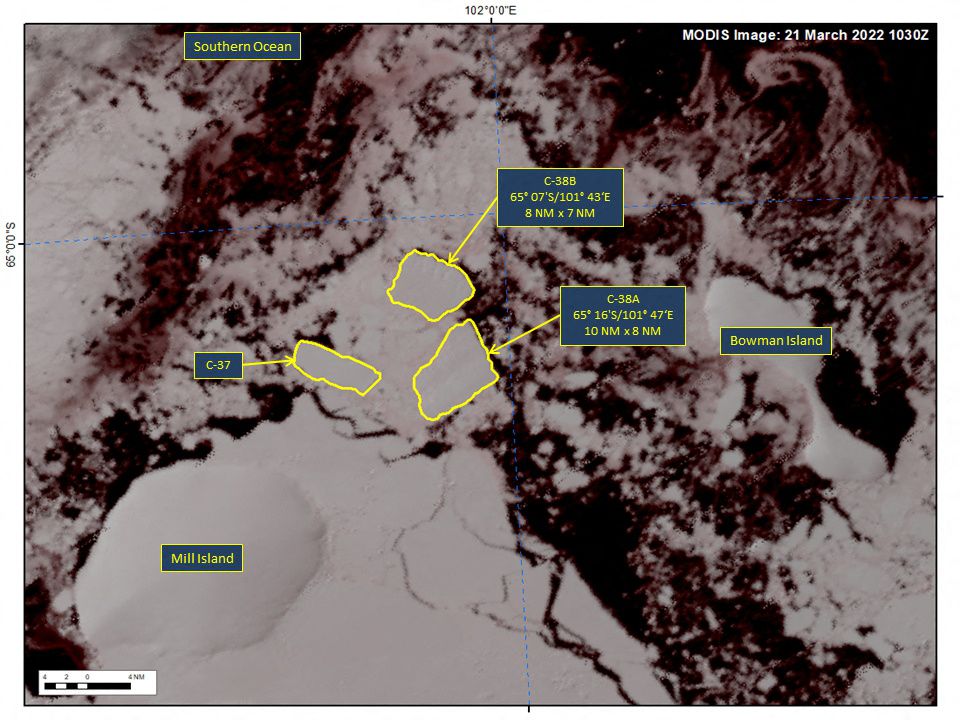
Geologists reported that an East Antarctica ice shelf melted this month as a result of the region’s severe temperatures.
The 1,200-square-kilometer Conger Ice Shelf disintegrated altogether on or around March 15, according to satellite pictures.
‘Possible it reached a tipping point after the #Antarctic #AtmosphericRiver and heat wave as well?’ NASA Earth and Planetary Scientist Catherine Colello Walker tweeted on Friday, sharing photographs of a white expanse falling into shards over the dark seas.
Ice shelves, which are permanent floating sheets of ice tied to land, build over thousands of years and operate like levees, keeping back snow and ice that would otherwise flow into the ocean, causing sea levels to rise.
According to Peter Neff, a glaciologist at the University of Minnesota, the March heat wave, with temperatures exceeding 70 degrees Fahrenheit (40 degrees Celsius) above average in sections of East Antarctica, was caused by the atmospheric river phenomena.
This mechanism generates columns hundreds of miles long that transport water vapour from the tropics, creating what Neff refers to as a ‘fire hose of moisture.’
‘The Antarctic climate is extremely unpredictable, but this was out of the ordinary,’ Neff said. ‘This was at least twice as severe a warming event as we would have predicted.’
Temperatures in the region are generally around -60 degrees Fahrenheit (-51 degrees Celsius) this time of year, although they were around 10 degrees Fahrenheit (-12 degrees Celsius) earlier this month.
They are now back to normal, according to Neff.
The frozen continent, surrounded by massive oceans and sheltered by winds that tend to protect it from large warm-air intrusions, is responding to climate change more slowly than the Arctic, which is warming at three times the rate of the rest of the world.
East Antarctica rarely warmed in the last century, but some places were affected, and the continent lost an average of 149 billion tonnes of ice every year from 2002 to 2020, according to NASA. The disappearance of the Conger Ice Shelf is the most recent example of how things are changing.
‘This poor little ice shelf was clinging on for dear life in this incredibly warm coastal climate, and it had been diminishing and getting destroyed over the last few decades,’ Neff explained.
The Conger shelf was splintering long before the heat wave, and its demise demonstrates how vulnerable the Antarctic system is to climatic changes, but the event itself is not cause for concern, according to Ted Scambos, a senior research scientist at the University of Colorado Boulder.
According to him, a little glacier behind where Conger used to sit may now flow quicker and dump a little more ice into the sea.

Post Your Comments